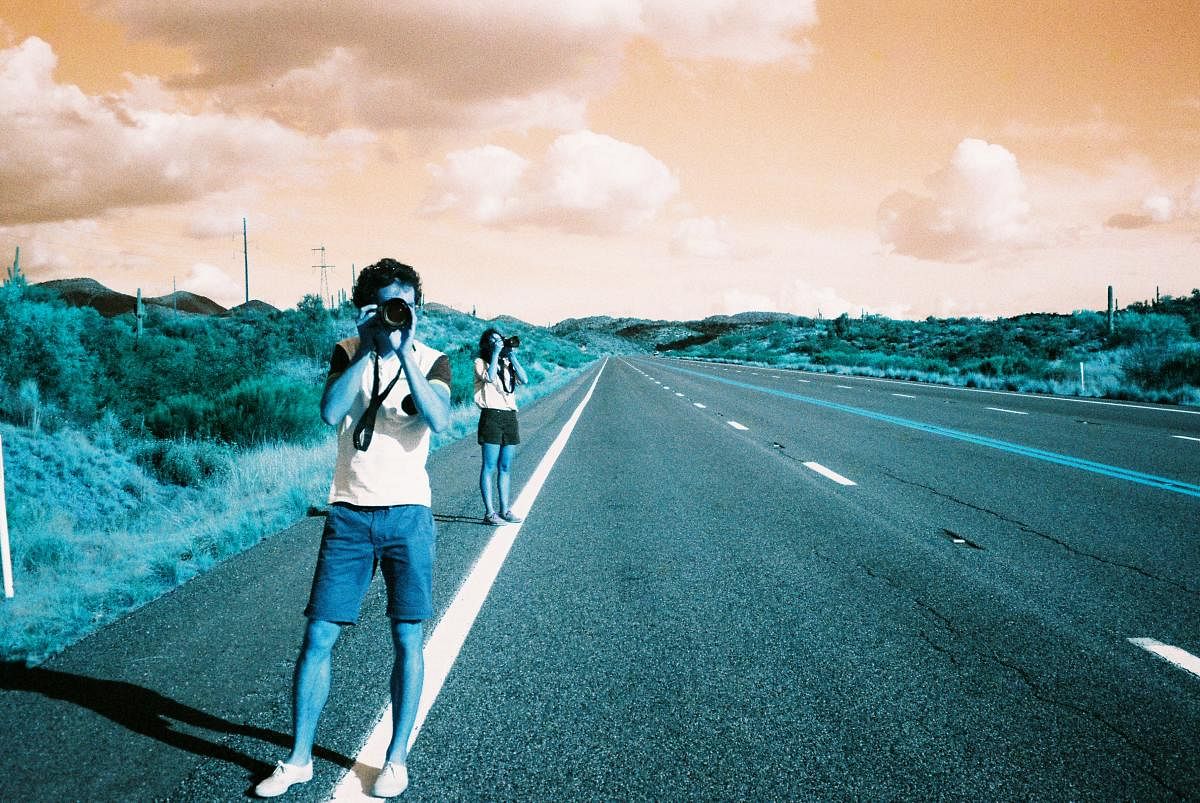
Do you remember a time before digital and phone cameras took over the world, when roll films were the only way to make memories? If you do, you will also remember the agony of inserting a roll into the camera, planning for each picture, and waiting for the pictures to be developed, to see how many hits and misses you scored? The pain of shooting at a not-so-great angle or keeping your finger on the flash is something today’s kids might never experience.
These, and many more, were the reasons why many were happy to switch to digital photography. But the love for the old-fashioned lives on among a small group that continues to use analogue cameras. Some youngsters in the city are attending workshops to learn the tips and tricks of shooting without instant results.
Sabir Ahmed, a part-time photographer, says that with newer technology and different chemicals, there is a renewed interest in analogue photography. “When you shoot on analogue, each frame comes with a price. You tend to slow down and be more selective when taking a picture. You have to estimate the light, framing and composition and have a more focussed approach.”
Some others take to this vintage way of photography for nostalgia.
Sabir takes workshops on analogue photography as and when possible. Topics taught include basics of photography, setting the camera, developing a film using chemicals and so on.
“These chemicals are commercially available or you can buy raw ones and mix them on your own. I also teach them how to create their own developers as well as how to create a positive image using a light-sensitive paper in a dark room,” he adds.
There are only a few places in the country that develop these films. “Since the number of such places in Bengaluru is less, enthusiasts sometimes send their films to Delhi, Hyderabad, Ahmedabad or Mumbai for developing, but the process is quite expensive.” Sabir has his own darkroom that he uses.
Prabhu Photos in Brigade Road is one of the places that develop films. The owner H N Allama Prabhu told Metrolife that he has observed more women are interested in analogue photography now.
developed negatives.
“When they come for the prints, they stay back and ask questions like why a picture didn’t turn out the way they expected. I tell them what can be done differently. They are so keen that they correct it and come back with the next film soon enough,” he explains.
One of the unexpected challenges with films comes while travelling as the films that you buy are often sensitive to scans. “Airport securities tend to stop you as too many people don’t know what a film role looks like. You have to explain the whole thing to them,” says Prabhu.
Meera Sankar, post producer and cinematographer, often conducts workshops in Europe for analogue photography. She says the apprehension people have to use this is the same across the world. She also gets questions like ‘why would you choose this over digital’ to ‘do you hate digital photography’.
She says, “The advantage of analogue is that you get to choose the chemicals you want to play with. If you have your own darkroom, you can mix your own chemical and get the results you want. But since there are very few places that actually develop it for you, people don’t want to take the risk of finishing a film and not getting the results they were looking for.”
However, she says that there are various options to send it abroad for a fairly cheap rate via mail and get it back to your address. Just like before, you’ll get the printed photographs and negative images via courier.
About 30 to 40 years ago, a film roll would cost Rs 100 whereas now it’s Rs 300.
Keep ready
- Things to keep in mind while shooting film photography
- Keep the lens and mirrors clean and check for fog on the glass. Service the camera
- Make sure the film roll is loaded properly
- Check if the batteries are working
- Use a light meter which gives accurate camera settings. An app can also be used for the same
- If your test photos have light leaks you will most likely need to replace the seals where the camera opens to load the film roll
Types of film rolls
- Black and White
- Colour negative
- Colour positive/slide
- Instant
What is Lomography?
Lomography uses analogue film cameras to create soft-focus images with bright colours. The word ‘lomography’ is often used to refer to the art of taking photos with analogue cameras marketed by The Lomographic Society International. The word is being increasingly used to describe any photography that uses cheap and quirky cameras.
Formats and Availability
Popular film formats and company available in the market
- 120 (Medium Format) Ilford, Kodak, Holga
- 35mm Kodak, Fujifilm, Ilford
- Polaroid Originals 79mm
- Instax 62mm
Before you buy an analogue camera...
- Check the physical condition of the camera for any damages especially the lens.
- Check if the shutter is in working condition.
- Cross verify the serial number of the camera online to know the year of manufacture and specific model.
- Once you identify the camera model, a used camera online store like eBay or KEN helps you determine the approximate cost.
- If the camera uses batteries, inspect the battery contacts and battery itself for corrosion.
- CameraWiki.org is an encyclopedia about cameras old and new cameras.